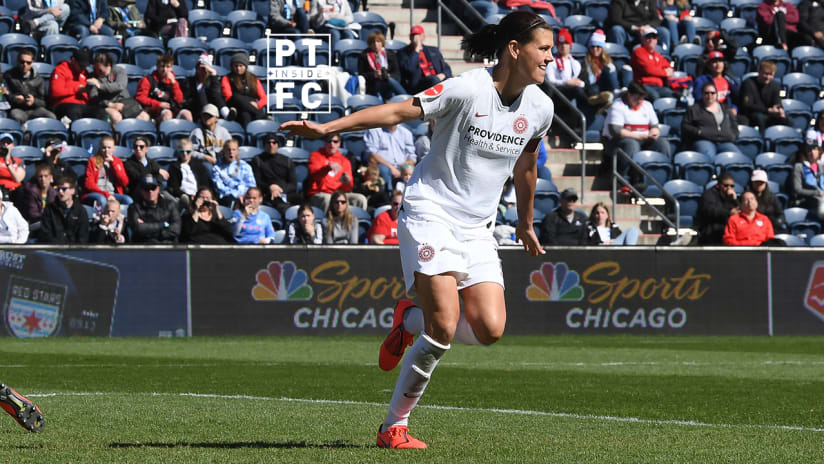Ben Taylor is such a common name, we all probably know of at least one. Mine’s a basketball nerd. He writes for a site called Nylon Calculus, does some of the best NBA-centric breakdowns on YouTube, and mans a Twitter account that speaks to the analytics-frocked wing of the sport. Oh, and he wrote a book. Within the number-heavy wing of the NBA fanverse, he’s reasonably known.
Three days ago, Taylor posted a video titled “How Bad Was His Defense?,” content that, when applied to a number of other NBA players, would have draw little more than a passive head’s nod. Except in this video, Taylor was talking about the most famous basketball player in the world, and while LeBron James remains at the height of his commercial power, ardent watchers of the NBA have come to see part of his game as slipping. To put it bluntly, some people think his defending sucks.
Taylor had another read on James. He didn’t deny that James’ defense has flaws. Sometimes, his feet seemed to leaden, and he has trouble covering ground to contest shots. But most of the time, to Taylor, James’ lack of movement was less a preservation technique than a conscious, in-the-moment decision about that possession. He was actually an above-average defender, if you broke down the film. His life’s 34 years and career’s 16 seasons were paying off in an efficiency of movement.
This video has kept coming to mind over the last two days, as I digested and digested and digested Portland Thorns FC’s Sunday performance. You watch the game one time, like anyone else; a second time to dig deeper on some narrowed-down ideas; a final time for this, something of purpose. Initially, that purpose was to highlight all the little things Thorns’ captain Christine Sinclair is taking with her as she departs for this summer’s FIFA Women's World Cup in France. Now, with Taylor’s video in mind, those little things have a slightly different focus.
Take this play, from Sunday’s first half. Right after Tobin Heath’s equalizing goal made the score 2-2, Sky Blue moves the ball from the middle to their right, then try to play back into midfield. Along the way, Sinclair barely breaks into a jog. She doesn’t pursue the ball. On the surface, she doesn’t appear to mark or close space on anyone. Moving minimally, she watches the play evolve.
To the maliciously inclined, this clip could be used for evil. Just cut out the part where Sinclair ends up with the ball; or, just keep it in, and say the outcome was luck. But this is Sinclair being LeBron. At 35 years old, she’s seen this play develop thousands of time. How many kickoffs do you think she’s been involved with since she started playing soccer? There’s no need to blindly chase the ball for the sake of flashing some superficial, hard work. The only purposes that would serve are selfish ones.
That motive, you’ll notice as we go through Sunday’s highlights, is the antithesis of what Sinclair’s about. Moment for moment, in movement and non-movement, Sinclair’s constantly making choices as if through the eyes of a coach. She’s playing passes one-touch, quickly, instead of keeping the ball to herself. She’s making runs away from the action, in order to create space, even if it leaves her farther from scoring a goal. She’s laying off passes in the six-yard box instead of trying to slam a ball home, and she’s playing passes into space, where her teammates are supposed to be, trusting them to do their jobs.
All of which takes us back to the clip, above. Those focused on the ball may not notice, but the player Sinclair’s primarily concerned with, Sky Blue defensive midfielder Julie James, is also not moving. Those subtle steps Sinclair does make keep her between James and the ball, so when the Thorns begin to win possession away from their opponents, it’s Sinclair who is in position to claim the loose ball.
This is LeBron deciding when to contest a three-point shot, or slide into the lane to take away a cutter. It’s years and years of repetition being combined with a heightened intelligence, manifesting in somebody who can serve multiple purposes. There’s no need to run around for the sake of distance numbers, particularly when you’re at a stage of your career when you know better. Your team is better served by you being smart, even if others’ ignorance will seize inactive moments as fodder.
The same dynamic is in play again below, four minutes earlier in the game. A nefarious viewer will see this as Sinclair going wide to win a ball and then stopping, an overly-simplistic view which, as I now realize, may be a strawman on my part. When Sinclair drops in front of the Sky Blue player initially, Heath comes inside from her left-wing position. She becomes the No. 10. Sinclair stays wide, taking the No. 7’s role.
Once there, there’s no reason to run around for the sake of your sweat. She stays ready, in position and, when she’s called on to claim a loose ball, ready to do so.
Two touches, and she’s drawn the defensive midfielder. She lays it off. Heath has acres to attack, so Sinclair goes wide, to try and maintain her room. Here, she’s at full speed, because it matters. Her team needs it. Sky Blue rookie Paige Monaghan makes the right play to come inside and take Heath down, but Sinclair did what she could to make the play work.
In terms of Sinclair’s unselfishness, the play after Monaghan’s foul is just as telling. After Heath’s restart lofts the ball beyond the penalty spot, a moment of chaos ensues, one in which many goal scorers would start stabbing at the ball. But where others see chaos, Sinclair saw opportunity.
As if she’d mentally slowed the play to a crawl, allowing her to dissect it in the same detail we are now, Sinclair calmly plays the ball to an open player, who was left with an unmissable shot. Sunday’s third goal was credited to Emily Sonnett, but it was Sinclair’s unselfishness, as well as analyst’s vision in real time, that allowed Portland to convert.
When teammates and coaches talk about all the little things Sinclair does, they may not even be thinking of these obvious examples. There are so many little things which, within the tactical plan, Sinclair executes unconsciously, taking one touch instead of three and spending the rest of the time moving into a new position. In each of her movements, you never see her asking what she, on an individual level, can accomplish. You see somebody who couples a vision for how her team should play with the power to convert it.
Take this play, her second touch of the game. She doesn’t even look to see if a teammate is wide, behind her. She plays the ball, knowing that Meghan Klingenberg is supposed to be there.
Did she likely, moments before, take a mental picture of the field, thus knowing where “Kling” was likely to be? In all likelihood, yes. But in this split-second decision, there was never a pause. Yes, this play is inconsequential, but it is still an example of Sinclair’s process. The easy play was the obvious one. Executed with expediency, it gave her team a better chance of building as quickly as possible.
That same process applies here, where Sinclair plays a pass first-time into space and is already moving before her teammate is on the ball …
… and here, where a turnover is quickly moved to Heath while, trying to maintain her team’s spacing in attack, Sinclair loops away from the action.
Earlier this month, we talked about the moments of technical quality that the Timbers were lacking during their first 45 minutes at FC Dallas. These small things Sinclair's doing, above, may feel ... well ... small, but when they're not executed with precision, plays slow down, sometimes to a stop. The ball Sinclair plays wide to Klingenberg, above, allows her teammate to maintain full speed. The ball between lines to Heath? It led her away from the place defenders were converging, putting her into enough space to make a new decision.
There are less subtle moments, too. For example, there’s this in the 12th minute, where in the span of a few moments she wins an aerial battle, claims the resulting second ball, briefly checks for a teammate’s run, and then floats a cross far post. Nothing came of the play, but in every decision and touch, Sinclair combined a calm and control few others could pull off.
These may not have even been her first half’s best decisions. There are so many obscure, hidden plays revealed when you focus only on Sinclair, it’d impossible to include them all in a reasonable post. Maintaining the attack’s spacing in the 29th minute, then not forcing doomed action when she reclaims possession …
… or making the best run she could in the 34th minute – one that likely gets rewarded at other points of the season – only to be overshadowed by a teammate’s stellar goal.
This is what the Thorns will be missing over the next two-plus months – somebody who can be relied on to constantly make near-perfect decisions without any sense of ego. To the extent Sinclair wants something for herself, she has defined it in terms of the team game. That’s the only way to explain the persistence, consistency of her decisions.
There's a point, though, when you start looking at players in this way, that analysis can become hagiographic, and give the impression of every little action being too precious. When you narrow your vision enough and try to to look for the sublime, you risk finding the mundane and pretending it's gold.
That Sinclair is the only player to make plays like these is not the point, though. It's that the consistency with she does them has become part of her playing identity, leaving little wonder about decisions she makes so simply, so often.
Consider: Every clip, above, is taken from less than one half of play, and from only her most recent game. In the notes I'm writing from, there are five other moments we could have used as examples. At some point, though, the clips become overkill. There is no way, in 1,800 words, to capture what Sinclair can do on the field. The best you can do is implore someone to watch.
At 35 years old, Sinclair has a claim to being the best player her sport has ever seen. Though he’s 34, the same can be said for James, and while both, to varying degrees, have others in contention for those honors, both players are adapting to make sure their final years remain persuasive. Their methods may be different than they were 10 years ago, but in the big picture, their influence has stayed on the same level.
At some point soon, international soccer will get a chance to fully celebrate Sinclair, who seems destined to become the game’s all-time leading international goal-scorer. In the interim, the Thorns will be dealing with another reality of the Portland icon. In the little things she does from moment to moment, Sinclair’s value may be unparalleled, and while that doesn’t always show up in the goals column, it may prove more difficult to replace while the Thorns internationals are abroad.














